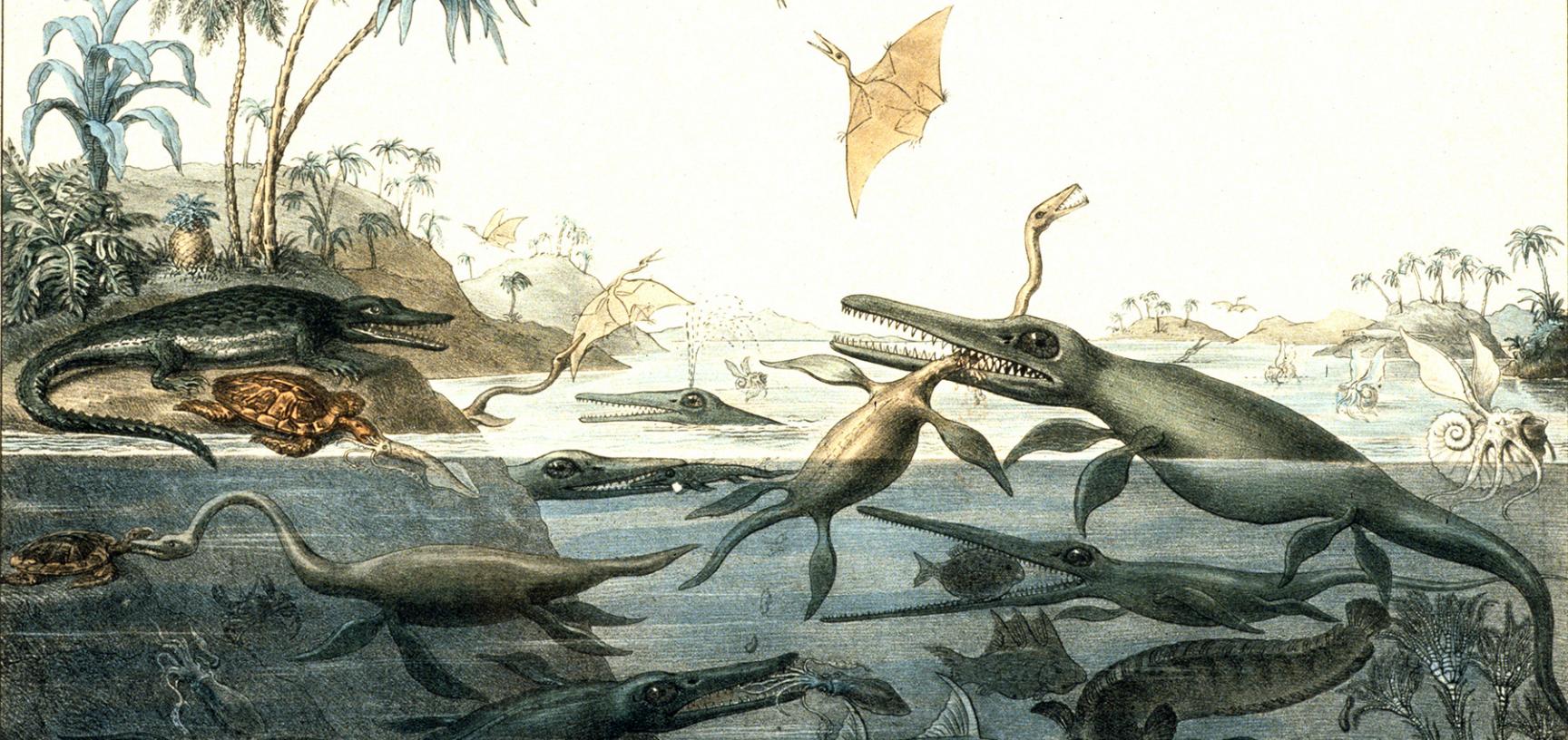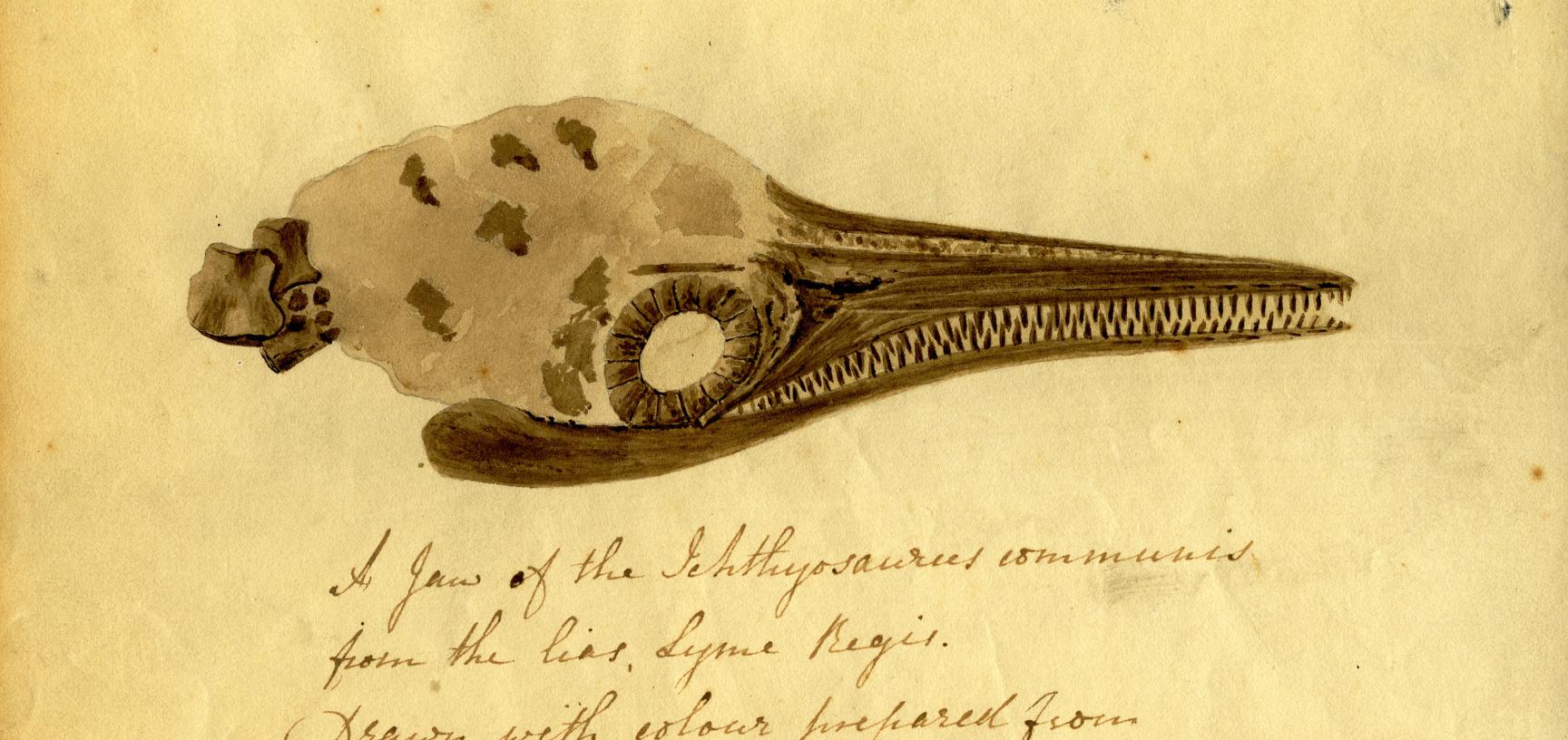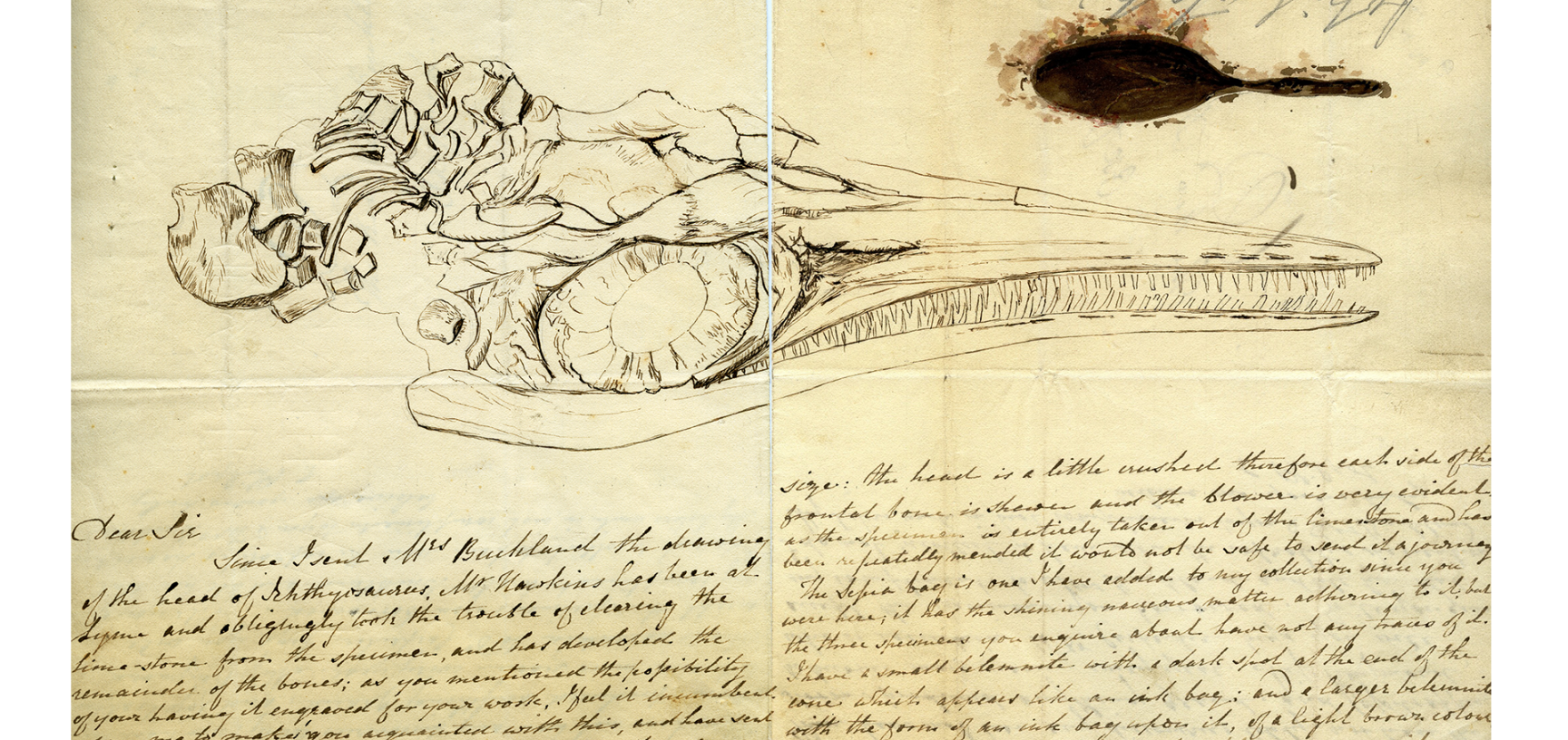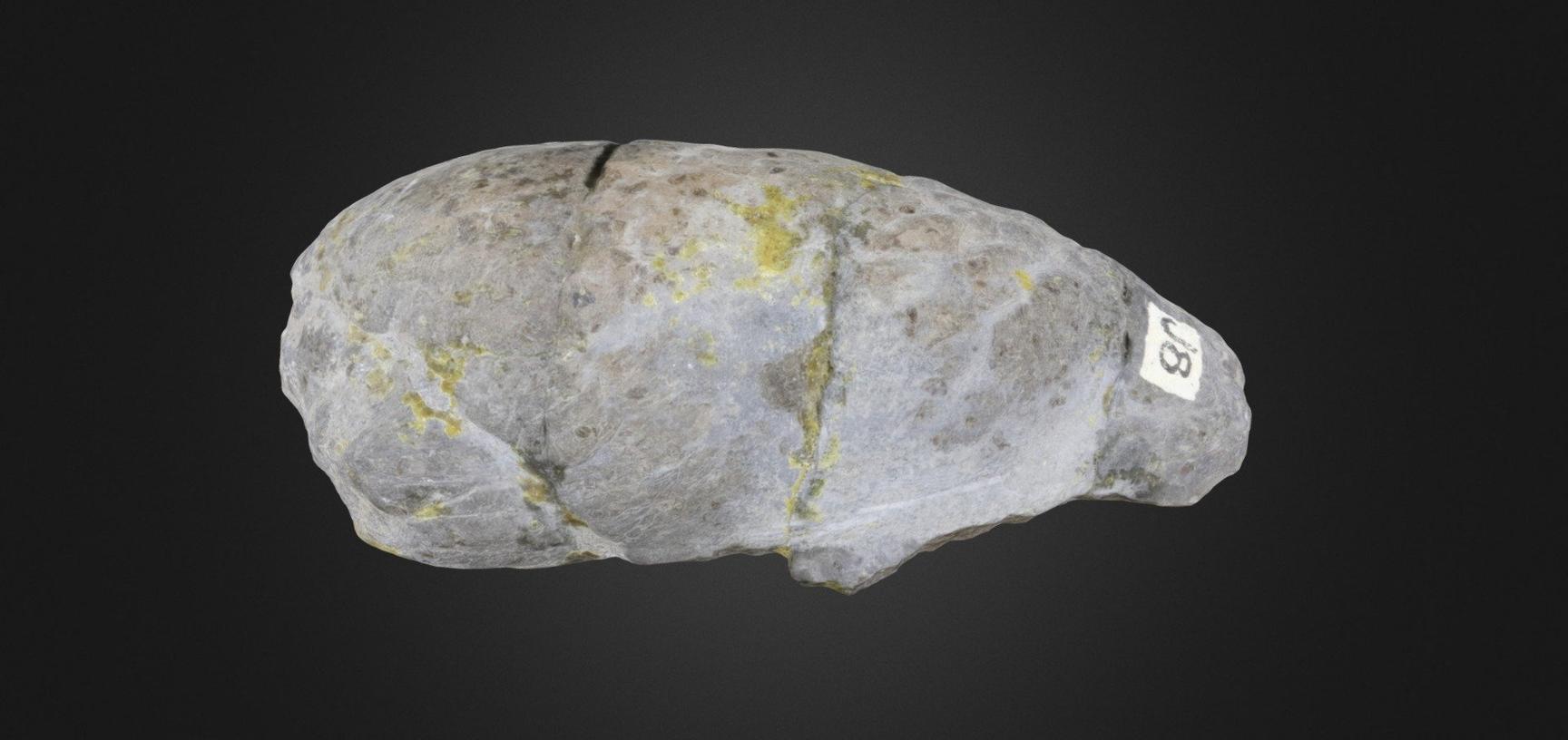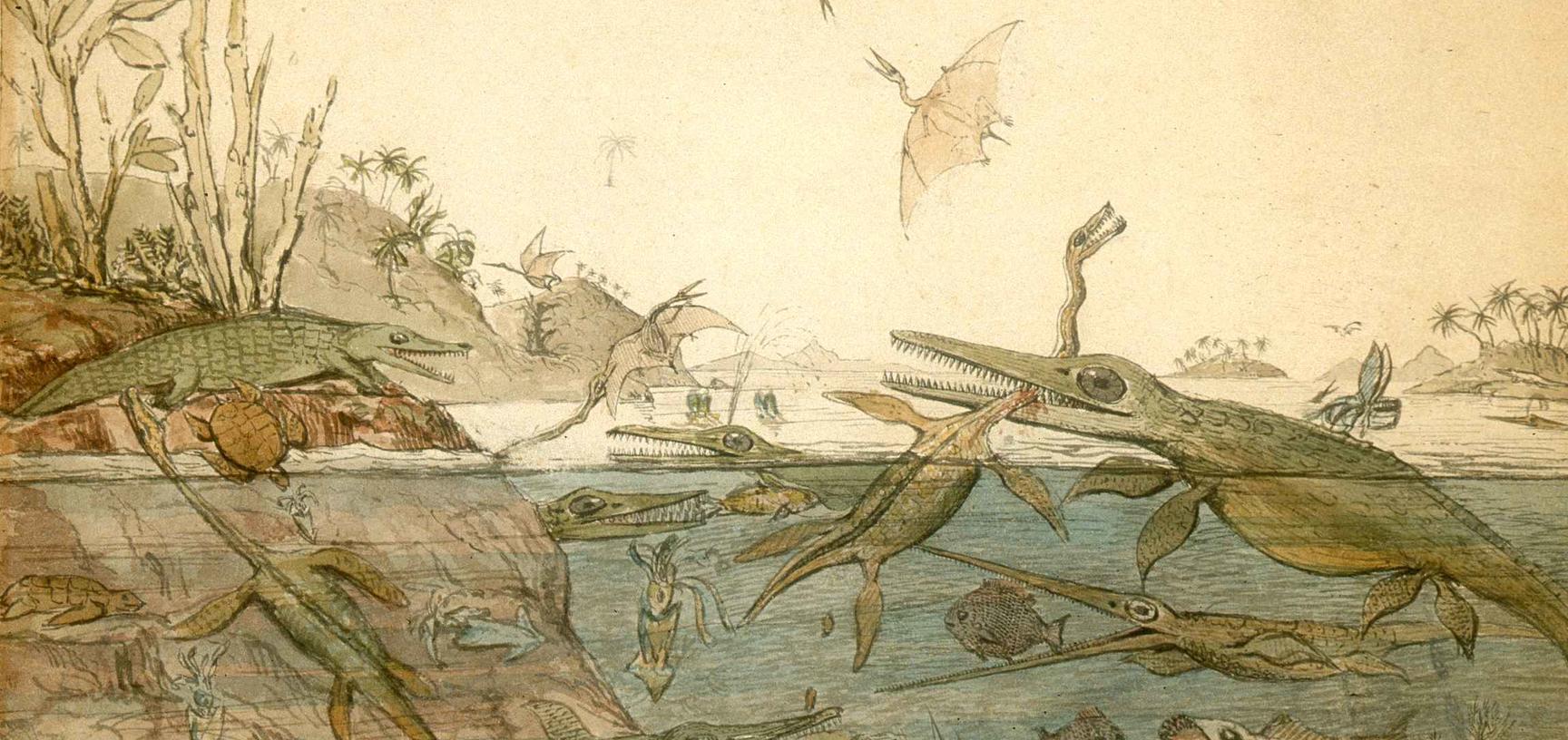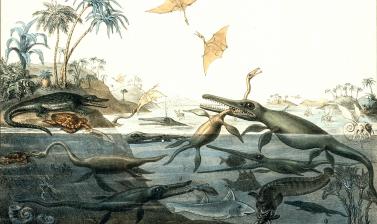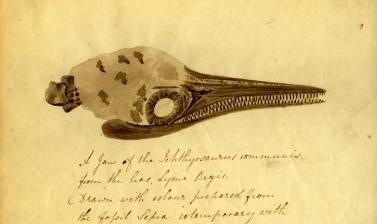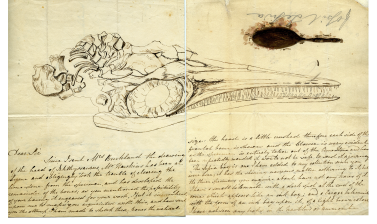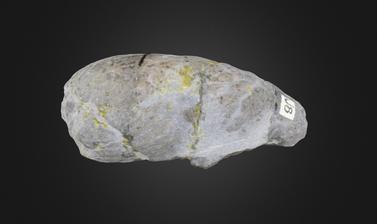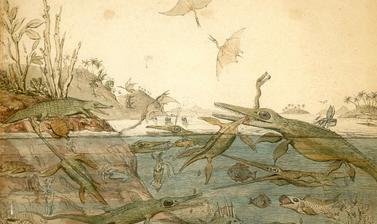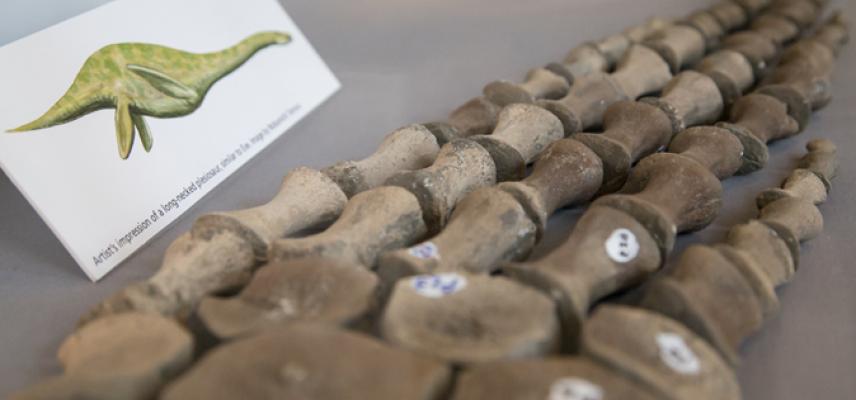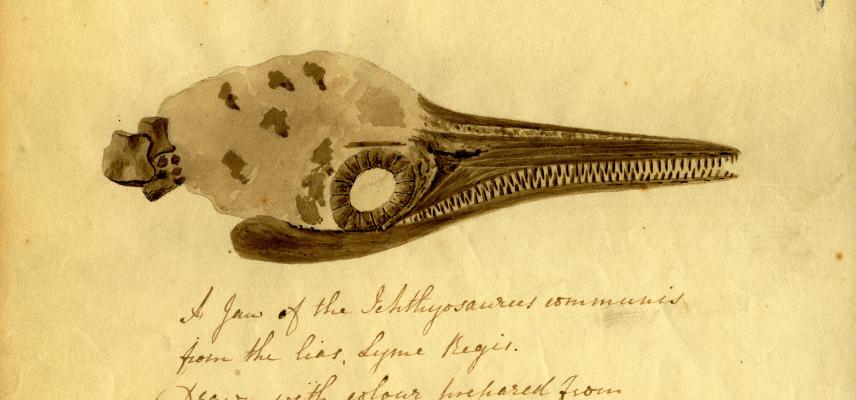Mary Anning's Ichthyosaur
On display in the Museum is the partial skeleton of a young ichthyosaur with stomach contents from the Lower Jurassic.
This 195-million-year-old marine reptile was discovered in Lyme Regis at some time before 1836 by the British palaeontologist Mary Anning (1799–1847). The ichthyosaur fossil is so well preserved that fish bones and scales from its last meal can still be seen inside its ribcage. It is one of the first ichthyosaurs ever discovered with preserved stomach contents from the UK. This particular specimen has recently been re-identified as a juvenile of Ichthyosaurus anningae, named after Mary Anning.
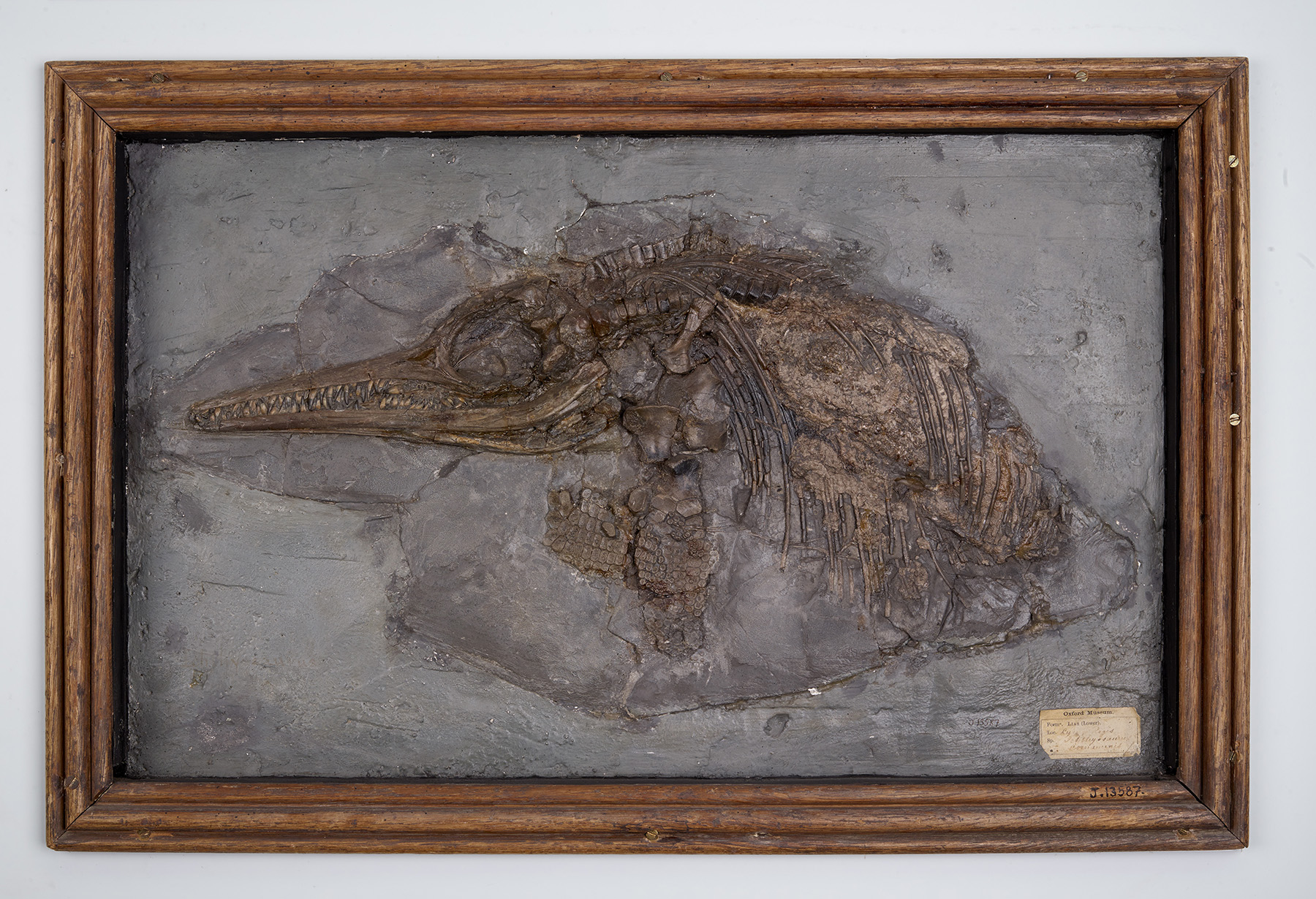
Its discoverer, Mary Anning, lived and worked in the English coastal town of Lyme Regis, finding and selling fossils. She made many important discoveries in the Jurassic rocks there, including the first plesiosaur to be scientifically described, and many other ichthyosaur skeletons. Her life, scientific work and discoveries are now celebrated worldwide.
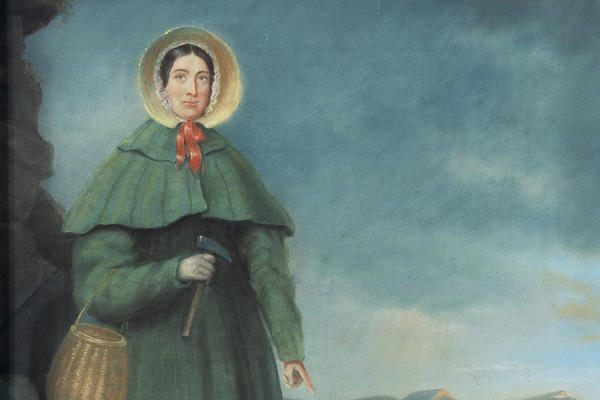
Pastel portrait of Mary Anning by Benjamin John Merifield Donne, 1850. ©The Geological Society of London.
An illustration of Mary Anning’s ichthyosaur skeleton appeared in William Buckland’s book Geology and Mineralogy (1836).
...Drag the divider to compare the drawing to the original fossil. Note how detailed and accurate the illustration is!
https://cdn.knightlab.com/libs/juxtapose/latest/embed/index.html?uid=db6170ae-9411-11e8-b263-0edaf8f81e27




